Welcome to my Trip Report on Cebu Pacific's Airbus A330!
*Aircraft photos are credited to the respective photographers from Airliners.net
Cebu Pacific's Airbus A330-300, RP-C3341 (Photo: Mike Forsberg)
Introduction
The decision to fly on this airline's Airbus A330-300 was an easy one when I look at the airfare and aircraft types between Ho Chin Minh City to Manila and Manila to Singapore. Airfare of the latter was cheaper and have the option to fly on this wide-body. The timing is also not bad as I could spend the morning doing something before heading home. The other flights were operated by Airbus A320 and they were out of the question for me. So once that was decided, I make the booking. Cebu Pacific's website is my preference over the Philippines. Lesser text and the process was faster and easier to use.
History of Cebu Pacific
This airline is a Low-Cost Carrier based in Manila, set up by JG Summit Holdings and was established in August 1998. This airline started operation in 1996 and operated a fleet of DC-9s. However, the startup didn't go smoothly as plan as the airline had to temporarily suspend operation in February 1998 due to an aircraft accident. However, the suspension was lifted a month later and was operating on only domestic routes at that time. By the end of 2001, it was operating 18 domestic destinations with about 80 daily flights. In the early 2000s, the airline was doing pretty well in the domestic market so it decided to be more ambitious by introducing flights on regional routes such as Hong Kong, Singapore, South Korea and Thailand. With approval to do so, the airline launched its first international route on November 2001 firs to Hong Kong then to Seoul. Singapore route was introduced later on but the SARs epidemic caused a disruption to the plans and the airline was forced to suspend Manila-Singapore route. In 2006, this airline made a return to Singapore on its Manila-Singapore route and later on Cebu-Singapore route was introduced. As time passed by, the airline continued to do well and a new order of aircraft was made, including the introduction of the ATR-72 and later on the Airbus A330-300 which was configured in the highest density. The airline has launched flights to the Middle East, Australia and U.S (Guam) and the future looks very bright for the airline.
About Manila Airport
Manila Airport is known as Ninoy Aquino International Airport which serves the people living in this capital city. This airport is a hub for PAL Express, Philippines Airlines, Cebu Pacific, Air Asia Zest and Cebu Pacific. Currently, this airport has 5 terminals, so make sure check which terminal your airline is operating from. Getting from one terminal to the next may be time-consuming if you are waiting for the shuttle bus.
The original airport to serve Manila before this known as Grace Park Airfield aka Manila North opened in 1935. 2 years later, Manila International Air Terminal was in operation and served as a gateway during that period. The airport was moved a few times before finally settling for the current location in 1948. A few years after the world war 2, runway and taxiway were built and 2 years later a control tower and a proper terminal building were ready to use. Unfortunately, in 1972, a fire took place in this terminal and a new building was built to replace it and became the international terminal until 1981 when the current terminal 1 building replaced it. In August 1987, the current name of the airport was given to honour Benigno "Ninoy" Aquino Jnr who was assassinated at the airport after arriving from the U.S. After that, a recommendation to build 2 new terminals was approved and terminal 2 was completed in 1998 and terminal 3 in 2002. Unfortunately for terminal 3, due to technical and legal issues, it was only fully operational in August 2014. Terminal 4 is the oldest building and it is known as the old domestic terminal building while Terminal 5 is known as the Budget Terminal and is currently at the planning stage. So not much details of this new terminal for now but it would be located beside terminal 3.
My flight route: MNL-SIN
Miles: 1,474
My ride: RP-C3341 (Photo: DN280)
About this aircraft
Airbus A330-343 (leased from Macquarie AirFiance)
The decision to fly on this airline's Airbus A330-300 was an easy one when I look at the airfare and aircraft types between Ho Chin Minh City to Manila and Manila to Singapore. Airfare of the latter was cheaper and have the option to fly on this wide-body. The timing is also not bad as I could spend the morning doing something before heading home. The other flights were operated by Airbus A320 and they were out of the question for me. So once that was decided, I make the booking. Cebu Pacific's website is my preference over the Philippines. Lesser text and the process was faster and easier to use.
History of Cebu Pacific
This airline is a Low-Cost Carrier based in Manila, set up by JG Summit Holdings and was established in August 1998. This airline started operation in 1996 and operated a fleet of DC-9s. However, the startup didn't go smoothly as plan as the airline had to temporarily suspend operation in February 1998 due to an aircraft accident. However, the suspension was lifted a month later and was operating on only domestic routes at that time. By the end of 2001, it was operating 18 domestic destinations with about 80 daily flights. In the early 2000s, the airline was doing pretty well in the domestic market so it decided to be more ambitious by introducing flights on regional routes such as Hong Kong, Singapore, South Korea and Thailand. With approval to do so, the airline launched its first international route on November 2001 firs to Hong Kong then to Seoul. Singapore route was introduced later on but the SARs epidemic caused a disruption to the plans and the airline was forced to suspend Manila-Singapore route. In 2006, this airline made a return to Singapore on its Manila-Singapore route and later on Cebu-Singapore route was introduced. As time passed by, the airline continued to do well and a new order of aircraft was made, including the introduction of the ATR-72 and later on the Airbus A330-300 which was configured in the highest density. The airline has launched flights to the Middle East, Australia and U.S (Guam) and the future looks very bright for the airline.
Old Fleet of Cebu Pacific
DC-9-31/-32 series
Past livery (Photo: Dennis Chang)
Different special liveries (Do you like them?)
Photo: Jack Hannen
Photo (Below): Michael Arcellana
Boeing 757-200
Past livery (Photo: Tam Le)
Special Livery (Photo: TonyV)
Current fleet (Old livery)
ATR-72-500
Photo: T.Laurent
Airbus A319
Photo: Gerd
Airbus A320 (Fuselage is longer than A319)
Photo: French Frog Airslides
The airline promoting its own frequent flyer programme. (Photo: SJST spotters)
Airbus A330-300
Photo: T.Laurent
Airbus A320 in the new livery
I like it, what do you think?
Photo: SJST spotters
An overview of MNL Airport (Photo: Andrew Hunt)
Photo credited to Wikipedia (below)
The map of the airport
The original airport to serve Manila before this known as Grace Park Airfield aka Manila North opened in 1935. 2 years later, Manila International Air Terminal was in operation and served as a gateway during that period. The airport was moved a few times before finally settling for the current location in 1948. A few years after the world war 2, runway and taxiway were built and 2 years later a control tower and a proper terminal building were ready to use. Unfortunately, in 1972, a fire took place in this terminal and a new building was built to replace it and became the international terminal until 1981 when the current terminal 1 building replaced it. In August 1987, the current name of the airport was given to honour Benigno "Ninoy" Aquino Jnr who was assassinated at the airport after arriving from the U.S. After that, a recommendation to build 2 new terminals was approved and terminal 2 was completed in 1998 and terminal 3 in 2002. Unfortunately for terminal 3, due to technical and legal issues, it was only fully operational in August 2014. Terminal 4 is the oldest building and it is known as the old domestic terminal building while Terminal 5 is known as the Budget Terminal and is currently at the planning stage. So not much details of this new terminal for now but it would be located beside terminal 3.
Terminal 1
This is the 2nd oldest terminal airport building, completed in 1981. Started operation in April 1982. The airport capacity size is 720,000 sq ft and has 18 Jet Bridges in operation.
Photo: Anthony Richards
Photo: Andrew Brescini
Airlines using this terminal (April 2016)
Air China
Air Niugini
Asiana Airlines
China Airlines
China Eastern Airlines
China Southern Airlines
Ethiopian Airlines
Etihad Airways
EVA Air
Gulf Air
Japan Airlines
Jeju Air
Jetstar Asia
Jetstar Japan
Korean Air
Kuwait Airways
Malaysia Airlines
Oman Air
Qantas
Qatar Airways
Royal Brunei Airlines
Saudia
Thai Airways
Tigerair
Turkish Airlines
United Airlines
V Air
Xiamen Air
Terminal 2 (Centennial Terminal)
This terminal started operation in 1999 and was named Centennial terminal in commemoration of the centennial year of the declaration of Philippines Independence. Slightly bigger than Terminal 1 with a size of 810,000 sq ft, but has lesser Jet Bridges at 12.
Airlines using this terminal:
Philippines Airlines
PAL Express (Certain routes only)
Some photos I took when I disembarked from my PAL flight (trip report over here)
Unfortunately for me, there were a few other flights just arrived which means more passengers at the immigration queue.
Photo: Adrian Thompson
Photo: Rommel Dorado
A long wait for our baggages
Arrival Hall (Outside the terminal)
I was advise to avoid the unlicenced drivers and instead take the public taxi. Grabtaxi and Uber would be my first choice next time around due to a bad experience.
Terminal 2
Airport Control Tower
Terminal 3
This is the newest and biggest terminal among the current 4. Construction started in 1997 but was finally completed in 2008. During the 10 years, this terminal was embroiled in battles (legal issues) with both the United States and Singapore. Finally, it opens its door in July 2008 with selected domestic flights to operate first before the international flights (airlines) were allowed to operate at this terminal at the end of February 2011.
Photo: Wikipedia
More photos of this terminal in my later part of this trip report.
Airlines using this terminal (2016)
Air Asia
Air Asia Zest (International)
All Nippon Airways
Cathay Pacific
Cebu Pacific
Delta Airlines
Emirates
KLM
PAL Express (Selected flights)
Singapore Airlines
Terminal 4
This is the oldest terminal used for only domestic flights. This terminal has no aero-bridges, therefore, passengers would either have to walk or take the bus from the terminal to the aircraft. Photos of this terminal are taken from Wikipedia.
Airlines that use this terminal
Air Asia Zest (Domestic)
Air Swift
Cebgo
Sky Pasada
Skyjet
Airline's website
The details are clear and what is also important is the aircraft type listed on it, just click on the flight number for more details.
I went for the Fly + Bag + Meal option
Disappointedly, only 2 choices were offered. I chose the Chicken Inasal.
My recommendation is to choose row 47 - no extra cost and you have some space for yourself. For this trip, I decided to choose the 3-seater to experience for myself how tight the seat width is.
My trip itinerary was confirmed. I find the website experience with this airline more pleasant than Philippines Airlines' website.
My experience in Manila
I got to experience Manila's good food thanks to a couple of friends.
My flight was at 12.30 in the afternoon, I decided to leave early. Instead of taking the hotel's transport (exorbitant price), I went for Uber and it was my first time using this app. Within minutes, the car arrived. The driver wasn't in a mood for a conversation but he got me to the airport safe and sound.
My stay: Guijo Suites Makati Hotel
Decent rate, comfortable room but average hotel service
I was upgraded to this room, paid U.S$45 for this room for a night.
I spotted this cafe across the hotel, decided to check it out after reading the review.
Restock Cafe
Pretty strong coffee I must say.
Kanin Club - The name of the Filipino restaurant
Interior
Kanin Club Crispy Dinuguan
Kanin Club Fried Tilapia
Kanin Club Bistek Tagalog
This is one of Fillipino's popular dessert
Razon's of Guagua Famous Halo-Halo
The following morning, I had the complimentary breakfast at the hotel. The selection of food was not bad but they charged me for beverages which I don't understand.
Once I reached the airport, I went to explore the terminal. Check-in was not opened yet so I spent the time taking some photos of the interior of the departure hall.
Web check-in
For Cebu Pacific international flights (except U.S - Guam), you can check-in 72 hours before departure.
I decided to change seat and it turned out to be a blessing in disguise. Read on to find out why.
Check-in successfully completed. Of course, I chose not to print out the boarding pass so that I could obtain the proper boarding pass at the counter.
Terminal 3
Photos of the landside
This is the dropping point for Cebu Pacific. Everyone including the non-flying public has to undergo security check before able to enter the terminal.
This is where my flight check-in counter is located.
The Interior of the terminal looks more modern than the other terminals. Unfortunately the airport Wi-Fi wasn't working for me.
A long queue was formed as the travellers were waiting for the Cebu International check-in counters to open. Why couldn't the staff allow us to queue up at the check-in area instead?
Singapore Airlines celebrated 50 years of operation at MNL Airport.
There are long queues at the check-in counters of other airlines.
There are shops and restaurants to hang around at the land side.
Emirates has it's own office in this airport
Passengers were encouraged to use the Cebu Pacific's self-check-in kiosk. I still went to the counter as I needed to check in my luggage and also get the proper boarding pass.
After my quick tour around the departure hall, I joined the queue and waited around 15 minutes before we were allowed in the check-in area.
Once there, I joined the web check-in queue and had to wait for another 5 minutes for the front passenger to clear before finally getting my boarding pass and luggage checked in.
An overview of the check-in counters
More shopping area and restaurants are located at the 2nd level. Do remember to keep track of the time!
A good number of restaurants are located on the land side, certainly more choices than the ones on the airside (restricted area).
The airside area
Do remember to keep track of your departure time as the walk can take a while depending on how far is the concourse to the gate.
The interior looks too basic for my liking
There are not many flights at this time
I was at the 2nd level earlier on (landside)
The interior doesn't look appealing to me.
There are more shops along the way to the gates at the other end of the airport.
Some cafes and snack shops to check out
Some of the gates are in an enclosed area while some are not, I wonder why.
This is where my departure gate was supposed to be but because a Cathay Pacific Boeing 777-300 was still at the gate when the departure time of my flight was near, we were moved to gate 112.
A few working computers to use, I think it's free to use them
Cathay Pacific was quite dominent at this airport with many flights here, at this moment, there were 2 Cathay Pacific flights departing around the same timing.
From this point to the end of the terminal, there were no more duty free shops to explore.
Gates 102-107 were vacant at this time, perhaps they would be used later part of the day.
A Cebu Pacifc Airbus A330-300 registered RP-C3343 was heading to gate 112.
We were then asked to move to gate 110 as I suspected RP-C3343 aircraft (Airbus A330) went tech ( aircraft technical issue). I noticed RP-C3341 (possibly a spare aircraft) was to towed to gate 110. After the announcement, the whole crowd of passengers shifted over to our newly assigned gate. This means further delay to our flight.
Miles: 1,474
About this aircraft
Delivered in June 2013
Configuration: Y436
Engines: 2 X Roll Royce Trent 772B-60
Age: 3 years old (2016)
MSN: 1420
Built in Toulouse
July 2022 update: This aircraft has left the fleet and now being prepared to operate for Flypop.
Once onboard, the cabin crew near the door greeted us and I was shown how to get to my seat. The other crew at their strategic location greeted me while on my way there. A good set of the crew I must say.
The conventional windows on this Airbus A330
The last few rows of this aircraft are 2-seater due to the diameter of the fuselage curving in.
Date of departure: 17th March 2016
Airline: Cebu Pacific
Flight: 5J805
Route: MNL-SIN
Aircraft: Airbus A330-300
Registration: RP-C3341
Gate: 110
Seat: 42J
Load: 95%
FL: 400
Duration 3 hours 5 mins
Boarding: 1352
Push back: 1459
Take off: 1515
Scheduled departure: 1330
Scheduled arrival: 1700 (1800)
Actual arrival: 1800
Departure runway: 24
Arrival runway: 02L
Finally, an announcement was made to board the aircraft but before it was finished, a large group of passengers headed towards the counter staff to board the aircraft. It was a mess but fortunately for me, I managed to get to the front pretty quickly and soon I was on my way to the aircraft. By this time, I was feeling tired and I just couldn't wait to get home.
Spotted my ride while walking down the aerobridge. This was to be my first flight on a full Y class configured A330-300 and also my first time flying on a 3-3-3 configured A330.
Look at the 436 passengers waiting at the gate!
Spotted my ride while walking down the aerobridge. This was to be my first flight on a full Y class configured A330-300 and also my first time flying on a 3-3-3 configured A330.
Economy Class photos
Look at how narrow the seats are!
Look at how narrow the seats are!
A full flight of 440 passengers on this medium size Airbus A330-300 is not fun to be on. The normal Economy Class seat has a seat pitch of 31'inch.
For the bulkhead row, the legroom space is better.
Look at how the aisle seat (left) blocking part of the aisle. That makes walking through the aisle more difficult.
The row in front of the emergency door offers better legroom space, except the window seat.
It took a while before we pushed back. This is the view from my seat.
During the flight, I had to get out of my seat. It got quite uncomfortable after a short while.
Here are some photos of the Economy Class
The lady walking down the aisle is the cabin crew, what do you think of the airline's uniform?
The lack of In-Flight Entertainment means many passengers used their own electronic devices to pass time.
Cabin's crew workspace at the rear
This was certainly a memorable flight on my 87th airline!
One of cabin crew's seat
The emergency door
2 small lavatories at the rear, the other one is located on the other side.
More photos of the Economy Class Seats
This was my seat, I was fortunate to sit beside 2 nice passengers.
I was happy to be getting off this aircraft. I would try to avoid the 3-3-3 configured A330 definitely.
There is enough space for one to do his/her work with the laptop.
Tight legroom space
The passenger notifcation seatbelt and no smoking sign and the individual light reader
Photos of the toilet
What's inside the seat pocket?
Safety Card
Safety Card
Disposal Bag
In-flight magazine
In-flight experience
The cabin crew were generally nice, some looked stress especially during the meal service but on the whole, I felt they did their jobs well and everything went smoothly. Passengers were well behaved and that helps the crew.
Once I got to my seat, I was slightly disappointed that to have seat mates to be honest, was hoping for at least the middle seat to stay vacant. However, both of them were nice. During the flight, we struck a conversation and ended up exchanging contacts. Always nice to make new friends, right?
At this point of time, for Filipino airlines, electronic devices as long as they are in in-flight mode are allowed to be used from gate to gate. (Departure gate to arrival gate). However, during the safety demonstration which on my flight was done manually, do pay attention to it even you are a regular passenger. Different aircraft = different configuration, always good know just in case. The problem is some passengers tend to panic, causing the rest to do so and that's where the problem lies. So pay attention and relax when an emergency situation occurs. Remember, panicking will slow things down!
The Captain announced a further delay due to some problems getting permission with the Airport Traffic Control to depart as soon as possible. I wasn't sure what he was saying, but he mentioned about Cathay Pacific taking up the original gate and heavy traffic going on at that time (2 p.m) and I checked Flightradar24 below, everything seems normal to me. Very puzzling but doesn't matter, as long as we were on our way, that matters most. One of the engines were started while the aircraft was still at the gate and we waited for 15 minutes before finally pushing back. Was there an APU problem? Usually the engines get started after push back. Maybe!
Check these photos! My aircraft was parked at the blue dot.
I don't understand why we couldn't push back when there wasn't much traffic around us during the 15 minutes.
Finally, we started pushing back after 15 minutes and once the 2nd engine was started, we taxied to runway 24 for departure. The flight crew gave us a detailed report on our departure and later on updated us on the weather in Singapore and all that. An apology was also made and the flight crew promised to try his best to make up for the lost time.
Take off was slightly bumpy but was smooth once we were out of Philippines, flying over the South China Sea for 2 hours 40 minutes before making a U-turn at one of the Indonesian islands as we prepared for arrival on runway 02L, Changi Airport.
Once the seat belt sign was turned off, the crew began their duty. They started off with a quiz which many passengers were not in the mood to play. Fortunately for the crew, they found a winner and gave each other a thumb up after that before resuming their normal duties.
Pre-paid meals were then served. I ordered the Chicken Inasal which comes with a drink of our choice. It is better to pre-order your meal as they get sold out quickly especially on a full A330 flight.
The rest of the flight was uneventful, had a chat with my seatmates while enjoying the view of the world passing by. Cabin crew had done well I feel and I feel for them because of the delay, they were going home later so do give them some appreciation when you leave the aircraft especially the hard-working and friendly crew. Try your best not to make their lives difficult.
In-flight meal
Chicken Inasal - I enjoyed it very much especially with the soy sauce over the rice
Chicken Inasal - I enjoyed it very much especially with the soy sauce over the rice
It was steaming hot when the staff handled the food over. I definitely recommend this.
My choice of drink - orange juice, together with the meal
Thanks to my seatmate for this! I saw this at one of the snack shops but I wasn't sure whether it is nice. If I had known earlier it was this tasty, I would have bought a few packets.
In-flight WiFi
I was surprised Wifi was available on this flight but I found it pricey.
The trouble of setting up the account
For the small plan, it cost US$2 for 8MB I think.
I know I would definitely use around 200 MB, and after looking at this pricing, I gave it a miss.
You can still check out the news though
Window-shot photos
Beautiful weather in Manila! RP-C3346 was being prepared for departure
Beautiful weather in Manila! RP-C3346 was being prepared for departure
It was a nice and smooth 2 hours and 40 minutes flight across the South China Sea.
At this point of time, we started our descend. I wasn't feeling very comfortable due to the uncomfortable seats.
My rating:
Airline's website: 6/10
Manila Airport terminal 3 Experience: 5/10
Check-in staff: 6/10
In-flight service: 6/10
Seat comfort: 3/10 (3-3-3 configuration is terrible)
Cabin interior: 6/10
Cleanliness: 0/10 (Cockroach spotted)
Punctuality: 0/10
In-flight meal: 7/10
Aircraft condition: 8/10
Overall rating: 47/100
Airline's website: 6/10
Manila Airport terminal 3 Experience: 5/10
Check-in staff: 6/10
In-flight service: 6/10
Seat comfort: 3/10 (3-3-3 configuration is terrible)
Cabin interior: 6/10
Cleanliness: 0/10 (Cockroach spotted)
Punctuality: 0/10
In-flight meal: 7/10
Aircraft condition: 8/10
Overall rating: 47/100
Conclusion
This is the lowest rating I have given so far and I think this number sums up my experience mostly for the delay, the "non-paying" visitor and the uncomfortable ride on the 3-3-3 (window seat) experience. The 15 minutes delay with one of the engines running at the gate remain a mystery to me even though the Captain claimed that due to Air Traffic Control, we had to stay for a while but why with one engine running? Possibly the APU (Provides power for the aircraft when engines are off) is not functioning? I didn't probe the crew about it as I was feeling exhausted by the time we reached Singapore. The late departure was mainly due to the late arrival of the aircraft. With a small fleet of Airbus A330-300, it would be difficult to follow the schedule if one or two become unavailable for whatever reasons. The airline may have spare aircraft - smaller Airbus A319 or A320 aircraft but they can only accommodate a total of 180 seats (A320) and my flight had around 400 over passengers, it would be difficult to transfer the stranded ones to other flights, even though there are 2 more flights (those flights may be full) for the day, transferring to another airline would not be possible since this is a Low-Cost Carrier and rivals are unlikely to help out. So the airline had no choice but to delay this flight. Whether this delay impacts the next few flights, only the airline knows and have to prepare for service recovery depending on how long the delay. I heard from my friends that delays are common with this airline. So if you fly with this carrier, be prepared for one.
Overall, this airline's safety record is decent (safe in my opinion) and if I fly with this carrier again, I hope to have a better experience especially departing from Manila. From this trip, comparing both Philippines Airlines and Cebu Pacific, I would rather pay more to fly with Philippines Airlines.
As for Manila Airport Terminal 3, I feel a lot more can be done to improve the facilities, not just this terminal, the others as well. A better transport system (Taxis, Buses and Train system) connecting from the airport terminals to town would be great. I can go on and on about the airport, but this will do for now.
You can check out my Philippines Airlines Trip Report over here.
Thanks for reading!
Cheers,
Charles
This is the lowest rating I have given so far and I think this number sums up my experience mostly for the delay, the "non-paying" visitor and the uncomfortable ride on the 3-3-3 (window seat) experience. The 15 minutes delay with one of the engines running at the gate remain a mystery to me even though the Captain claimed that due to Air Traffic Control, we had to stay for a while but why with one engine running? Possibly the APU (Provides power for the aircraft when engines are off) is not functioning? I didn't probe the crew about it as I was feeling exhausted by the time we reached Singapore. The late departure was mainly due to the late arrival of the aircraft. With a small fleet of Airbus A330-300, it would be difficult to follow the schedule if one or two become unavailable for whatever reasons. The airline may have spare aircraft - smaller Airbus A319 or A320 aircraft but they can only accommodate a total of 180 seats (A320) and my flight had around 400 over passengers, it would be difficult to transfer the stranded ones to other flights, even though there are 2 more flights (those flights may be full) for the day, transferring to another airline would not be possible since this is a Low-Cost Carrier and rivals are unlikely to help out. So the airline had no choice but to delay this flight. Whether this delay impacts the next few flights, only the airline knows and have to prepare for service recovery depending on how long the delay. I heard from my friends that delays are common with this airline. So if you fly with this carrier, be prepared for one.
Overall, this airline's safety record is decent (safe in my opinion) and if I fly with this carrier again, I hope to have a better experience especially departing from Manila. From this trip, comparing both Philippines Airlines and Cebu Pacific, I would rather pay more to fly with Philippines Airlines.
As for Manila Airport Terminal 3, I feel a lot more can be done to improve the facilities, not just this terminal, the others as well. A better transport system (Taxis, Buses and Train system) connecting from the airport terminals to town would be great. I can go on and on about the airport, but this will do for now.
You can check out my Philippines Airlines Trip Report over here.
Thanks for reading!
Cheers,
Charles










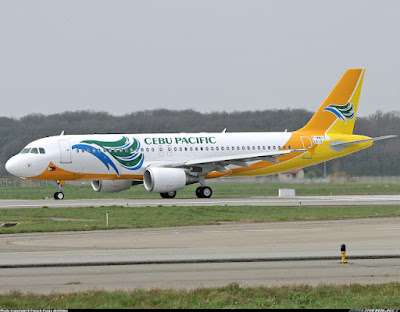




















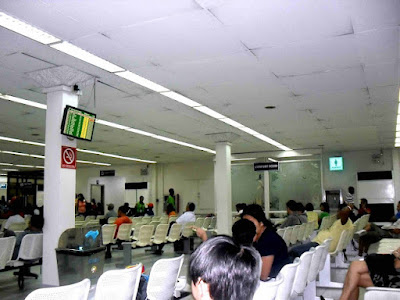

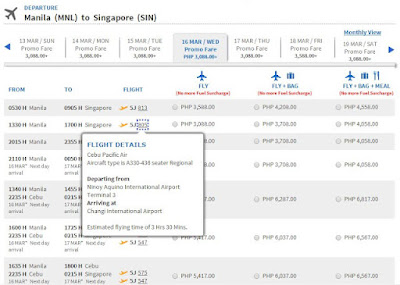











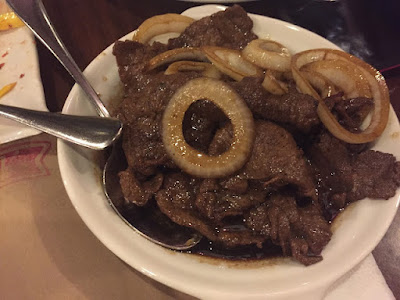



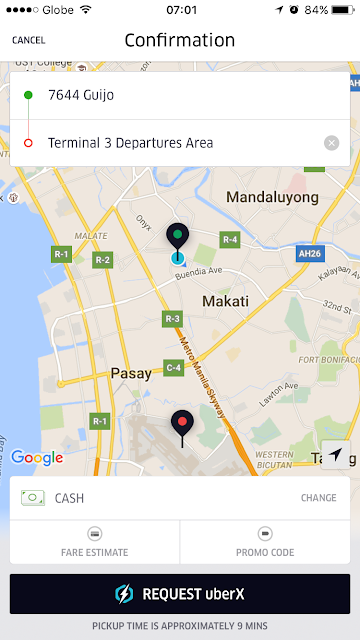

















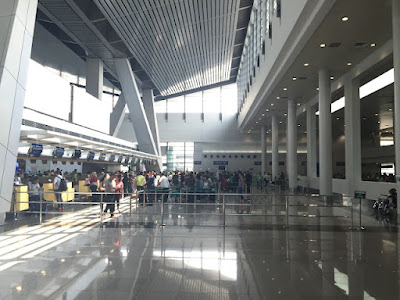


















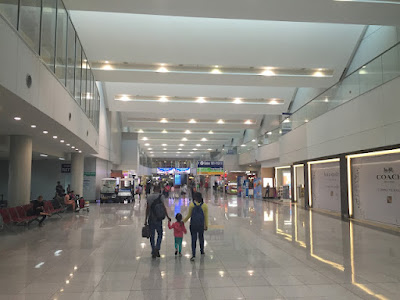










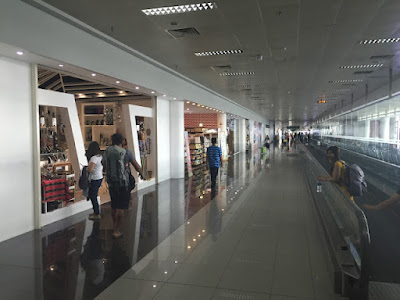






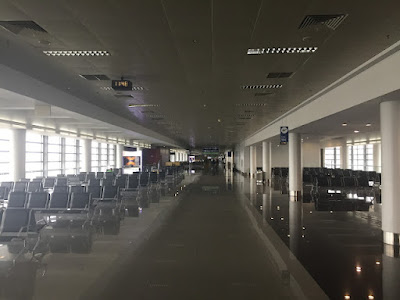


























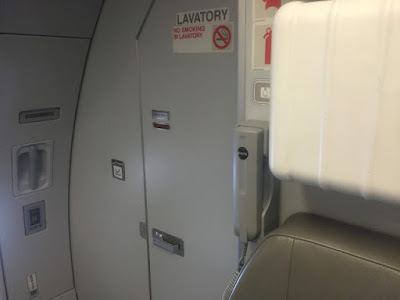









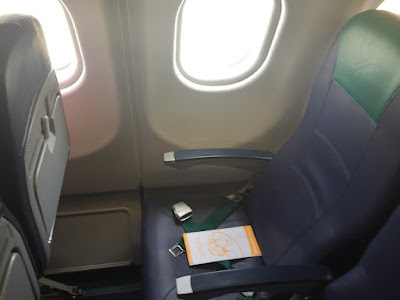























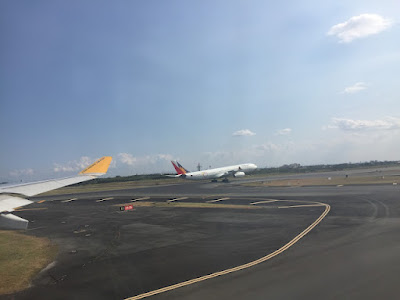

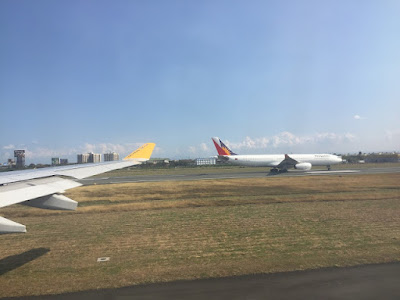




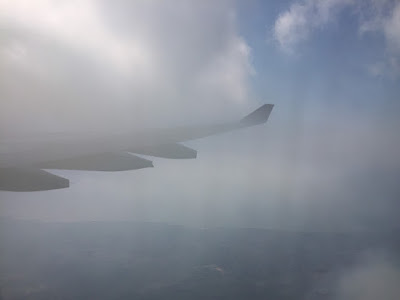






No comments:
Post a Comment